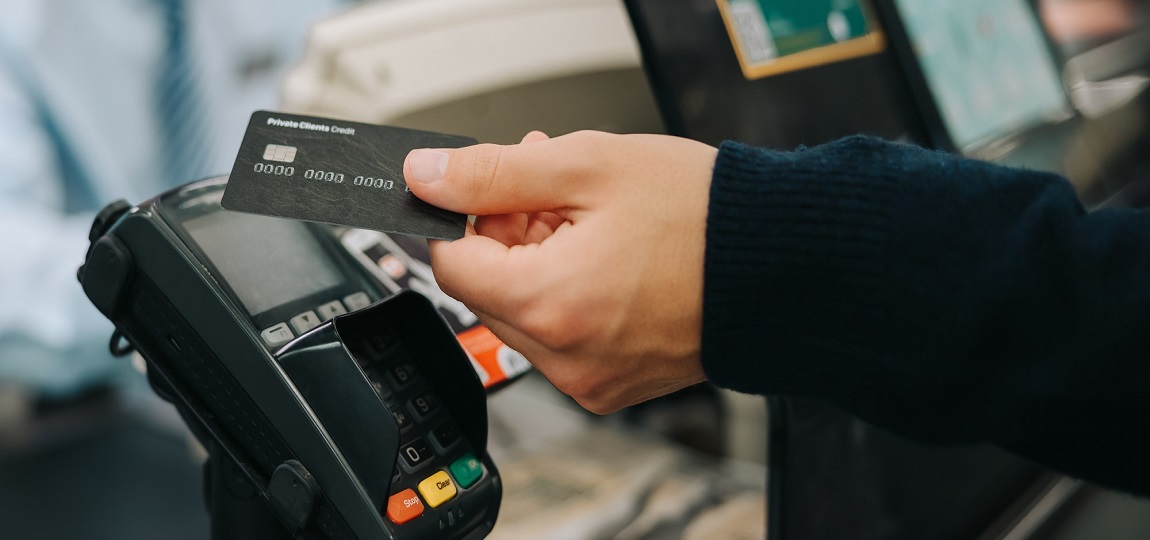Contactless payment methods are becoming the new normal for stores, restaurants and everything in between. Contactless payments allow you to place your credit card or debit card on or near a card reader for convenient, secure and germ-free transactions. This technology – commonly referred to as “tap to pay” - was starting to emerge before the COVID-19 pandemic, and with a worldwide focus on sanitation and social distancing, contactless payments are continuing to rise in popularity.
Many merchants don’t even require you to have a physical card in hand. If your debit card or credit card issuer offers compatibility with a mobile payment or digital wallet service like Apple Pay or Google Pay, you can download your card information onto your phone or smartwatch in order to make purchases at supporting retailers.
Let’s take a closer look at how contactless payments work, and some of the potential benefits to using this new technology.
- How Do Contactless Payments Work?
You can complete a contactless payment with a credit card or debit card that has “tap to pay” capability. A compatible card can typically be identified by the “tap to pay” symbol. This symbol looks similar to a Wi-Fi symbol, but is positioned horizontally instead of vertically. Contactless cards use Near-Field Communication (NCF) technology, a version of Radio Frequency Identification (RFID) technology. You may be familiar with RFID technology as it is commonly used in pet tracking chips and access cards that allow you to enter a building. It is likely that RFID will continue to grow in popularity.
With contactless payments, your card passes encrypted information onto the compatible card readers in stores, restaurants and other businesses. All you have to do is tap or position the card or mobile device near the card reader and you’re done. There is virtually no wait time for contactless transactions. After you tap, a token is sent using radio frequencies. The card reader then decrypts the message and allows you to complete your purchase.
- How Secure are Contactless Payments?
Although any kind of “new technology” can spark security concerns, contactless payments are considered to be a safer option than traditional card swiping. They utilize encryption technology that is thought to be just as secure as inserting an EMV chip card into a chip card reader. When you use a contactless card or mobile device at a payment terminal, a one-time randomly-generated code containing numbers and special characters is sent to the vendor. Each time you make a purchase, your contactless payment transaction creates a new code. This typically protects you from debit card fraud because even if someone accesses your transaction information, they cannot identify any of your card details such as your card number, pin, or expiration date.
One security concern that has cropped up in regards to contactless cards and the RFID technology that powers them, is that hackers could potentially extract, or “skim”, the card data on them when in close proximity to your card. While many experts state that this is not a viable threat due to the encrypted nature of how RFID technology works, it’s always a good idea to follow basic security measures to protect your card information. This can include keeping your debit card or credit card in a wallet instead of in a pocket or money clip, watching for suspicious people holding a mobile device up to your wallet, pocket, or bag, and checking your card statements on a regular basis for any fraudulent transactions.
- Are there Benefits to Using Contactless Payments?
There are several potential benefits to contactless payments. Here are some that you may not have considered:
• Prevents the Spread of Germs. When you use contactless payments, you keep your card or mobile device in your hand. This prevents the spread of germs and bacteria to you and others because you never pass the card to another person, and you’re not dealing with bills and coins that have been touched by countless other people. Contactless payments also allow you to avoid touching the card reader used by other shoppers. If you need to enter a PIN using an e-wallet, you can often do so from your mobile phone or smartwatch. With people continuing to be highly focused on sanitation even after COVID-19, contactless payments can be an easy and effective way to protect yourself.
• Reduces the Time Spent at the Register. With cash transactions, you have to wait for the cashier to count out your change. With traditional credit cards, the processing time takes much longer than with a contactless card payment. Many businesses also offer to send your receipt via email, further protecting you from contact with store employees and making the checkout process that much quicker.
• Compatible with Smartphones and Smartwatches. If your card provider supports digital wallets, you can sync your card data to your smartphone using a service like Apple Pay or Google Pay. You can then take the convenience up a notch by linking your digital wallet to a smartwatch. Apple watches are compatible with Apple Pay, and there are many smartwatches on the market that support Google Pay. Having your card information handy on your mobile device will allow you to make purchases even when you don’t have your physical card with you.
• Benefits for Businesses. Contactless payments also benefit the businesses that offer them. When customers use contactless payments, employees do not have to handle their debit and credit cards, helping to keep them safe. On top of that, contactless transactions can be faster and more efficient, helping to speed up the checkout process and alleviate long checkout lines.
The COVID-19 pandemic pushed more people to adopt contactless payment options than ever before. Although new technology can seem intimidating, the convenience, security, and hygienic safety offered by contactless payments has made them a much sought-after option for customers and businesses alike.
